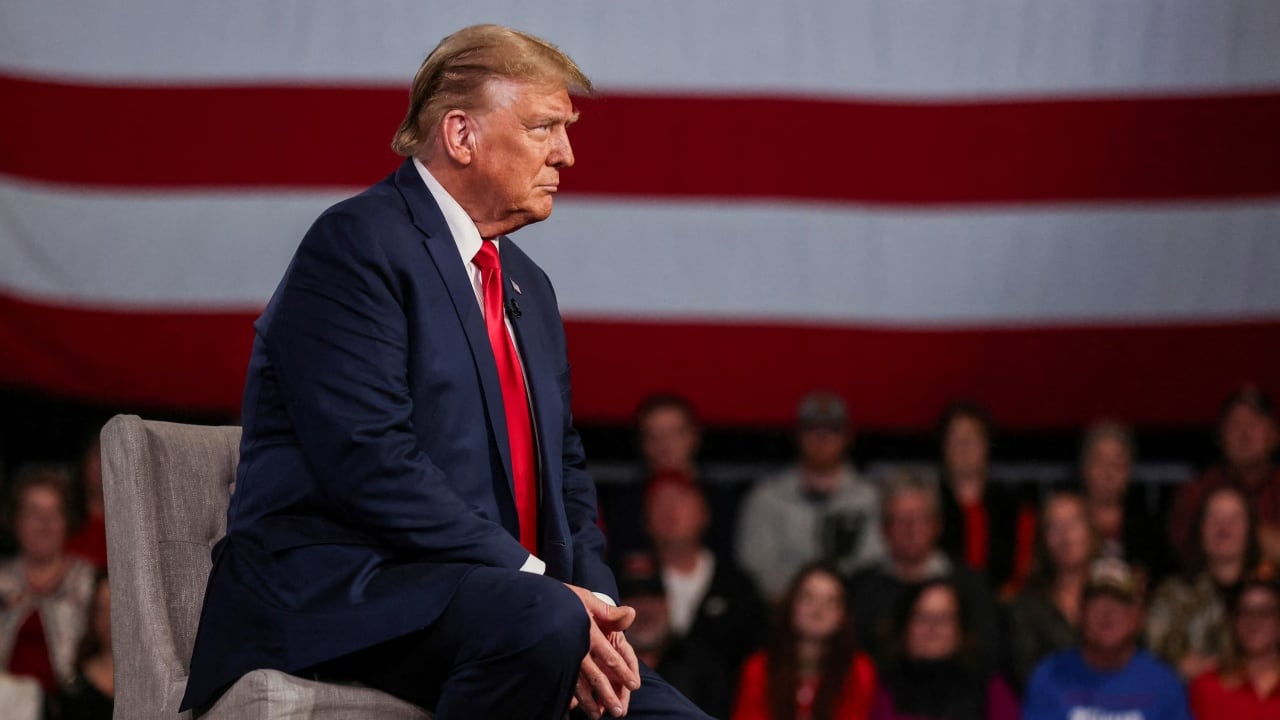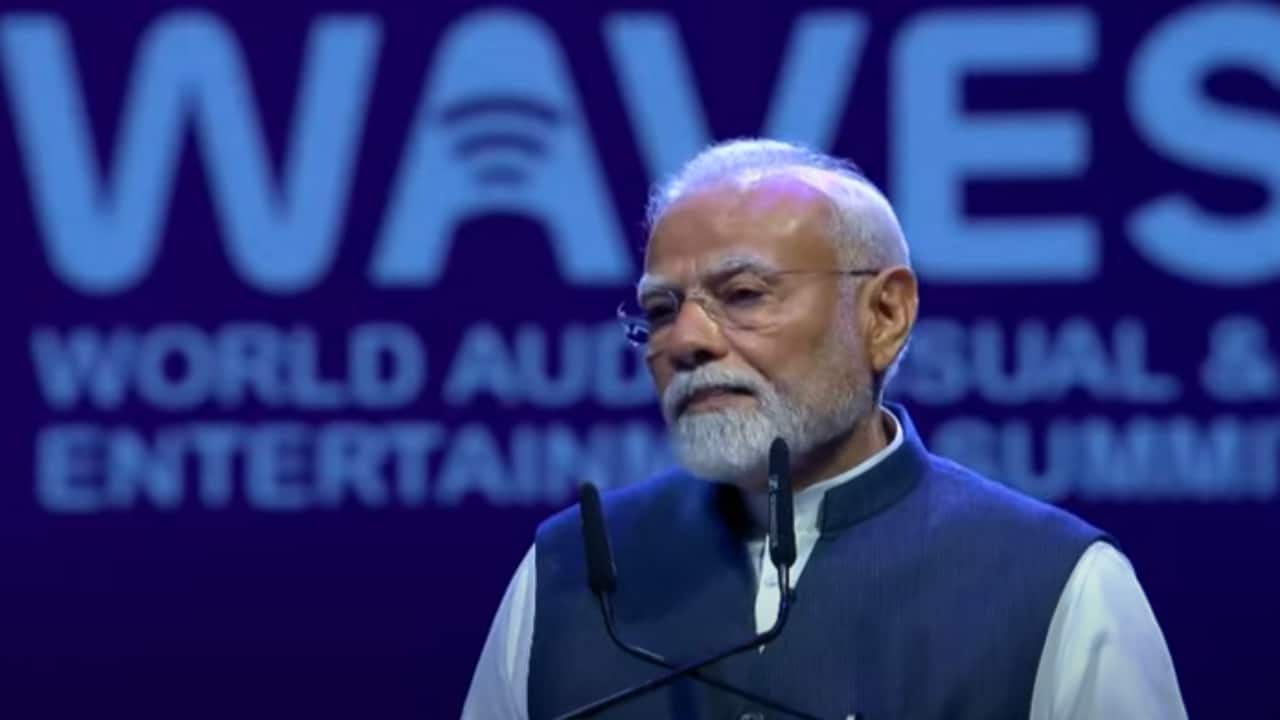A visitor to the city wearing a mask of President Donald Trump in front of the White House in Washington, Thursday, March 13, 2025. (AP Photo/Ben Curtis) Ben Curtis/The Associated Press Jeff Rubin is the author of A Map of the New Normal , published by Allen Lane, and former chief economist and chief strategist at CIBC World Markets. It’s been an election defined by the trade war and washed in nationalism.
At every turn, Liberal leader Mark Carney played up the threat of U.S. President Donald Trump and his own strength and firmness in the face of that.

Mr. Carney arguably won the election as a result. One survey , on which leader can better take on Mr.
Trump, showed Mr. Carney with a nearly 40-percentage-point lead over the Conservatives’ Pierre Poilievre. Mr.
Trump has called Mr. Carney a “very nice gentlemen” and brushed off his campaign rhetoric. But fresh with a new mandate, Prime Minister Carney seems tempted to deliver on his words and escalate the fight.
“We deserve respect,” Mr. Carney said in postelection remarks, hammering home a point he has made more than once. Talks with the United States would happen “on our terms, not on their terms,” Mr.
Carney said. There is merit in such a stance. U.
S. tariffs will do a lot of damage to Canada’s economy, after all. As the job loses mount in the vehicle and parts industry, and likely the steel and aluminum industries as well, Canada has understandably retaliated by targeting American exports with comparable tariffs.
But as justifiable as such action is, Mr. Carney must realize that Canada will ultimately lose in any protracted tariff war with the United States for the very simple reason that the Canadian economy is a lot more dependent on the American market than the U.S.
economy is on the Canadian market. Exports carry three times the weight in Canada’s economy then they do in the U.S.
economy and three-quarters of all Canadian exports go to American markets. Or at least they did. The solution to Canada’s trade war dilemma may be a bitter pill: We need to expand trade with countries from which we’ve long tried to distance, such as the BRICS (Brazil, Russia, India, China and South Africa) economies.
We’d need to recalibrate our foreign policy. It’s perhaps an unpalatable prospect for a country that has long aligned trade with ideology. But to endure this trade war, Canada may have to make peace with its own discomfort.
To understand why Canada is so vulnerable against the United States we have to understand the reason behind the tariffs. The imposition of a punishing 25-per-cent tariff on Canadian autos and parts, aluminum and steel are not the capricious actions of a mercurial president. There is a very real economic context that compels these measures whether we chose to recognize it or not.
President Donald Trump has long argued that a trade deficit is a jobs deficit. And certainly these industries, as well as a multitude of other hollowed-out manufacturing industries, bear witness to that viewpoint. America was once the largest steel producer in the world, employing more than 600,000 workers who were paid good middle-class wages.
But that was back in a world where America’s steel industry was protected by high tariffs and quotas. Successive rounds of trade liberalization, first under GATT and then under its successor the WTO have whittled away those trade barriers, allowing cheap steel and aluminum to flood the U.S.
market and in the process close down steel and aluminum mills across the country. Today, the once-largest steel producer in the world is now the largest importer of steel in the world, importing almost four times what it produces. The same story has played out in the aluminum industry.
Whereas America once had as many as 25 primary aluminum smelters, the number had shrunk to less than five before Mr. Trump started imposing tariffs during his first administration. One might naturally suspect that the major culprit here is America’s chief global rival China, which long ago replaced America as the world’s largest producer of both metals, accounting for about half of global production of each.
But as it turns out the major culprit isn’t America’s global rival but rather its friendly neighbour to the north. In fact these industries largely owe their very existence in Canada to their access to the vast American metals market. Canada is the largest source of U.
S. steel imports and overwhelmingly so for aluminum imports. In fact, 90 per cent of Canadian aluminum production is exported to American markets while roughly half of Canada’s steel output is sent across the border.
Without that market access there wouldn’t be 25,000 workers employed in the Canadian steel industry and almost another 10,000 in the aluminum industry. And no company would invest in either Canadian industry if Canadian plants can no longer sell their output into the U.S.
market. There are of course even bigger stakes at play in the auto industry, which next to the oil and gas industry is the Canadian economy’s largest exporter and largest manufacturing industry, directly employing more than 125,000 workers. Ironically in this case, the Canadian industry is as much the victim of trade as is the U.
S. industry. If NAFTA was the worst trade deal ever negotiated for American autoworkers, as Mr.
Trump frequently claims, it was an even worse deal for Canadian auto workers. The only difference was that unlike Mr. Trump, successive Canadian Liberal governments viewed their autoworkers as expendables.
Before the North American auto industry’s wholesale exodus to low-wage Mexico, Canada produced nearly three million vehicles a year. By 2004, Ontario had surpassed Michigan to become the leading car manufacturer on the continent. Fast forward to today and the Canadian industry produces little more than half of what it once did.
And now, facing a 25-per-cent American tariff, the industry won’t even be able to to sustain current production levels. GM has already cancelled shifts at its Oshawa plant while it is boosting employment at its plant in Fort Wayne, Ind., that manufactures the same Chevrolet Silverado, the last remaining model still produced at its once renowned Oshawa plant.
Meanwhile Stellantis has announced that it is closing its entire Windsor operation, where 3,000 workers assembled minivans and the Dodge Charger Daytona. Cami announced it will be closing its plant in Ingersoll, Ont., laying off 450 workers as Mr.
Trump’s tariffs add US$15,000 to the price of its electric van. The seeds for today’s tariffs on Canadian autos and parts were planted in the acrimonious negotiations between the two countries leading to the U.S.
-Mexico-Canada trade agreement signed during the first Trump administration. Unlike America’s lead negotiator Robert Lighthizer, whose primary objective was to safeguard jobs, Canada’s chief negotiator, then foreign affairs minister Chrystia Freeland, had a very different objective. She championed the interests of shareholders in Canadian auto parts manufacturers such as Magna over the interests of their rapidly shrinking Canadian work force, all under the guise of claiming solidarity with Mexico.
And while Ms. Freeland publicly criticized anti-union right-to-work legislation in a number of U.S.
states, she had nothing to say about Mexico’s infamous “ghost” unions that Canadian auto parts manufacturers, among others in the industry, routinely use to negotiate wage settlements, typically one-eighth of the wage rates negotiated by real unions for autoworkers back in Canada and in the United States. Mr. Carney now has a difficult task ahead.
In the face of a trade war with the United States, diversification (championed now by all Canadian federal parties and provincial premiers) is the obvious solution. But with whom? In today’s world, finding new trading partners is complicated by the fact that trade relations are now integrally linked to geopolitical alliances. In that regard the European Union is an obvious diplomatic choice.
Mr. Carney clearly sees that. Among his first phone calls after the election was with French President Emmanuel Macron.
And when Mr. Carney had first become prime minister, he made a beeline for the old continent while spurning Mr. Trump, telling a crowd at the Élysée presidential palace: “I want to ensure that France and the whole of Europe works enthusiastically with Canada, the most European of non-European countries.
” But is more trade with Europe the right choice from an economic standpoint? EU economies are far from dynamic, hobbled in no small part by the huge energy costs that have attenuated its sanctions on Russia. And historically the EU has been far more protectionist than the United States. The BRICS economies, on the other hand, have led the world in growth over the past two decades.
China, Russia India and Brazil, all founding members of the organization, have taken the top four spots while recently joined Saudi Arabia claimed fifth place. By comparison, the U.S.
economy ranked a distant 12th. And no one can doubt the ability of BRICS markets to provide more than an effective haven from American economic warfare. Just look at how well Russia’s heavily targeted oil and gas sector has done.
Faced with what then-president Joe Biden called crippling sanctions, a claim parroted by Justin Trudeau and other Western leaders, Russia’s energy sector has gone on to post record export earnings courtesy of the welcoming arms of China’s and India’s vast energy markets. But would those Asian giants be inclined to do likewise for Canadian exporters now targeted by U.S.
tariffs? Few of America’s allies have more acrimonious relations with Russia, China and India then Canada has under past and present Liberal administrations in Ottawa. Repairing them will be no small feat. Nevertheless, if U.
S. foreign policy under the new Trump administration can take a 180-degree about-turn with regard to the war in Ukraine, perhaps Canadian foreign policy can do likewise with regard to relations with key BRICS countries. It will have to if Canada wishes to offset the mounting economic impact of ever-escalating American tariffs.
What Canadians currently face is not the reality that most would chose. But it is the reality that all Canadians now need to recognize..
Business

A blustery trade-war election. But now Canada must see the bitter reality

The American market is a lot more important to the Canadian economy than vice-versa. Sure, trade diversification, but where?















